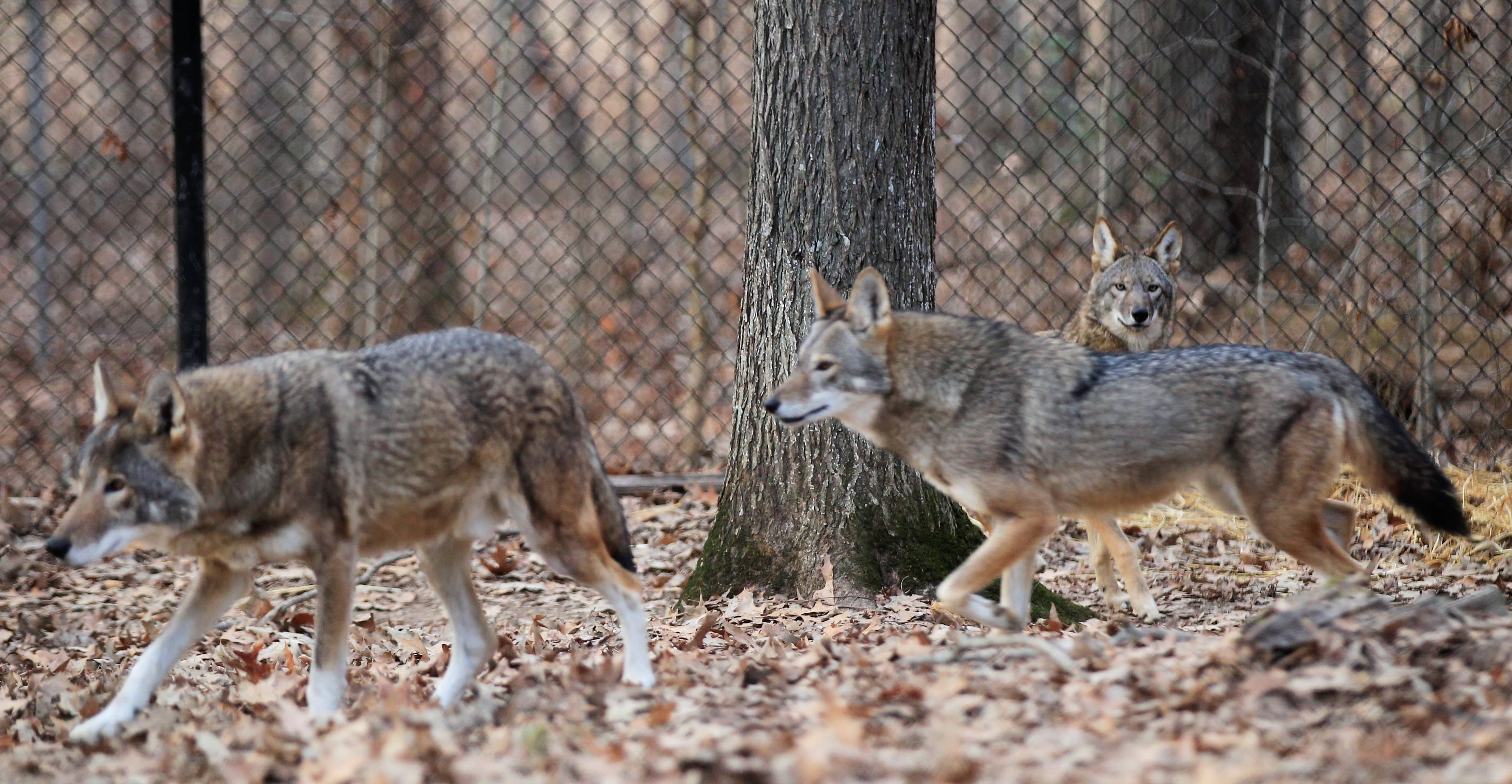
No longer puppies, a quartet of red wolves are approaching their eight-month birthday at the Land Between the Lakes Woodlands Nature Station in Trigg County — a significant step toward adulthood, and becoming part of the 200-plus population that 40 years ago was on the brink of extinction.
Their April 26, 2022 birth, as Lead Naturalist John Pollpeter puts it, was nothing short of miraculous, and at the very least unexpected.
The litter’s father, Jasper, has been at the outpost since 2017. He’s nearly 90 pounds and approaching his 14th birthday, and already has children and grandchildren from a previous stay in captivity at Chattanooga’s Reflection Riding Arboretum & Nature Center.
Furthermore, red wolves age much like large dogs, and Pollpeter noted 14 years is about the natural limit of the species — meaning his strong fertility seemed implausible.
The mother, a proud four-year old named Ember, comes from the Knoxville Zoo. Despite being only 50 pounds, Pollpeter said she was so feisty and aggressive, it took five zookeepers just to crate her for the transfer to LBL.
But she’s got a lot of gumption, and after being placed in the same pen as Jasper, Pollpeter said the two naturally “hit it off” — and have been nothing but fantastic parents over these last few months.
According to Pollpeter, red wolf females don’t show pregnancy well, but in the week prior to the quartet’s birth, they noticed the timing of the year — combined with Ember pulling the hairs from her belly and nipples — meant puppies were possible.
Theorizing a possible false pregnancy, Pollpeter said they lined and prepared the dens just in case they were wrong. This ended up being a prudent decision.
What’s more is how captivated the public has been since their arrival. Social media engagement with photos and videos has been exceptional, and Pollpeter said the Nature Station enjoyed one of the busier summers in his 25 years of service with the refuge.
In July, a naming contest and poll resulted in appropriate, LBL-themed names for the young.
The fantastic four, Pollpeter said, add an important aspect to the red wolf line — which at one point was down to just 14 members. They can only be found in the wild in two locations: the Outer Banks of North Carolina, on St. Vincent’s Island just off the Florida panhandle coast.
Five red wolves have been born at the Nature Station in the last decade, Pollpeter added, and another batch of four came in the 1990s — many of which have gone on to bear their own families.
At two weeks old, they were active but couldn’t open their eyes. At a month, they were able to take their first outside steps from the den alone — their ears bigger than their bodies. At four months, Pollpeter said they experienced the “awkward teenage” moments. Now, they’re considered sub-adults. Two are bigger than dad. All are bigger than mom.
And they’re only native to the south central United States.
This year, 29 red wolves were born at 45 different U.S. facilities — including this lot.
Red wolf demise, and conservation
The American red wolf used to be plentiful in west Kentucky and other parts of the south, particularly prior to the American Civil War from 1861-1865.
In great detail, Pollpeter noted that European colonization — and the great drive toward the west — played a large role in the thinning of the species.
But the killing of wolves wasn’t the only reason for their decline. Pollpeter added that settlers also naturally chipped away at the red wolf food chain, as the hunting of squirrels, waterfowl and small deer drove a wedge in the food groups needed to sustain.
Now, Pollpeter said red wolf conservation implements some of the first-ever use of tactics like island propagation and wild fostering, and that the red wolf is the first “predator” to be brought back from nearly-complete extinction, the first endangered animal to be removed from the wild, the first predator to ever be released back into the wild, and involves the first-time use of helicopters to tranquilize and transport a predator when found in its natural habitat.
For more information, visit https://www.fws.gov/project/red-wolf-recovery-program.
No data found.





